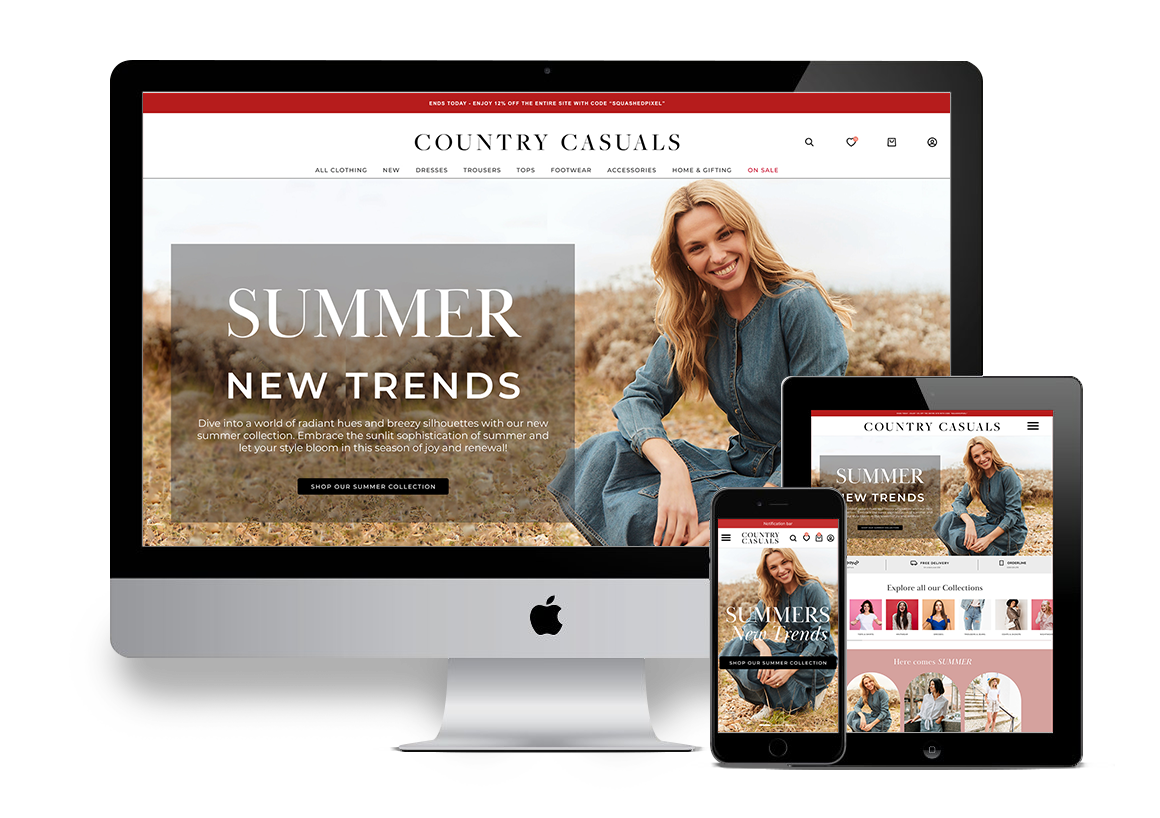Country Casuals
Country Casuals is a new clothing line and brand that will have an online only store. The client required wireframes, initial basic page designs and UX research to help inform and guide their internal design team to create hi-fidelity designs.

Project Brief
The brief was to create a new bespoke site that was to to take the best features from current online clothing E-Commerce shops. A frictionless user experience was vital as well as the ability to be easy to maintain. The clients did not want any design or functional features that would appear to be just a gimmick or a current ‘fad’ but only use features that would benefit the user flow through the site. The client did not have an existing website for Country Casuals I would be responsible for the following UX & UI designs which include the following:
Competitive benchmarking
Live usability testing
Affinity Diagrams
Flowcharts
Wireframes
Hi Fidelity Designs
Prototypes
The Process
As the UI/UX designer on this project, I spearheaded a comprehensive design process grounded in Lean Agile principles, emphasizing iterative design and continuous client feedback.
Initial Assessment and Strategy Formation: The project commenced with an in-depth analysis of the client's needs, user demographics, and market trends. This initial phase was crucial in shaping the design strategy, ensuring alignment with business objectives while maintaining a user-centric focus. Live user testing was carried out on two competitors and competitive benchmarking was carried out.
Agile Workflow Integration: Adopting an Agile framework, I would work in iterative cycles, allowing for flexibility and rapid adaptation to evolving requirements. This approach facilitated a dynamic design process that was both efficient and responsive.

UX Research
A number of different research methods was undertaken to gather feedback on competitors website design and the user experience.
Competitive benchmarking
Surveys
Live user testing
Affinity Diagram
Competitors were chosen on similarity of price and target audience as discussed during the Initial Assessment and Strategy Formation. Live user testing and competitor benchmarking methods were used to gather data to find out what design elements and functionality helped the user journey and to also discover any areas that caused friction for the user flow, This data would be used for an affinity chart.
Wireframes
In the design phase, I focused on creating intuitive and aesthetically pleasing interfaces. Wireframes were developed to visualize the user experience, which were essential in identifying usability issues early in the design process.
Client Collaboration and Feedback: A key aspect of this project was the active involvement of the client at every stage. Regular meetings and feedback sessions were scheduled to ensure that client perspectives were integrated into the design. This collaboration not only enhanced the final product but also fostered a transparent and trusting client relationship.

Design and Prototyping:
In the design phase, I focused on creating intuitive and aesthetically pleasing interface. Prototypes were developed to visualize the user experience, which were essential in identifying usability issues early in the design process. This phase involved frequent iterations, where each version was refined based on stakeholders input.
Final Delivery and Evaluation:
The project culminated in the delivery of a UI/UX design that was both aesthetically compelling and functionally robust. Post-delivery, an evaluation phase was conducted to assess the design's impact and identify areas for future improvement.
Throughout this project, my role as a UI/UX designer was not just about creating visually appealing designs, but also about ensuring that those designs were practical, user-friendly, and aligned with the overarching goals of the project. The use of a Lean Agile process and the emphasis on iterative design and live client feedback were instrumental in achieving a successful outcome.



